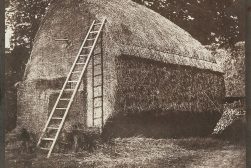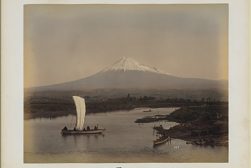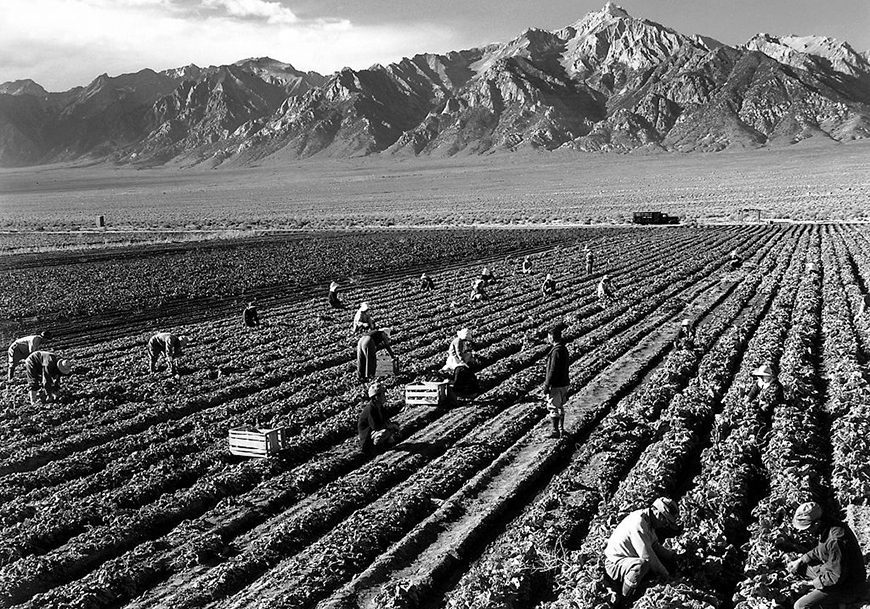
43 Famous American Photographers You Should Know
Photography wouldn't be where it is today without the work of these well known male and female American photographers. Make sure you've seen them all.
Famous American photographers have left an indelible mark on the world of photography, shaping the medium through their vision, creativity, and technical expertise.
From documentary pioneers who captured the struggles and triumphs of American life to innovative artists who pushed the boundaries of photographic expression, these photographers have made significant contributions to the art form.
Through their iconic images, they have documented history, challenged social norms, and inspired generations of photographers.
From the raw and emotional portraits of Dorothea Lange to the captivating street scenes of Robert Frank, American photographers have embraced diverse styles and subjects, reflecting the vastness and diversity of the country itself.
In this article, we will explore the lives and works of some of these famous photographers from the US, delving into their unique perspectives, groundbreaking projects, and enduring legacies.
43 American Photographers To Follow in 2024
Ansel Adams
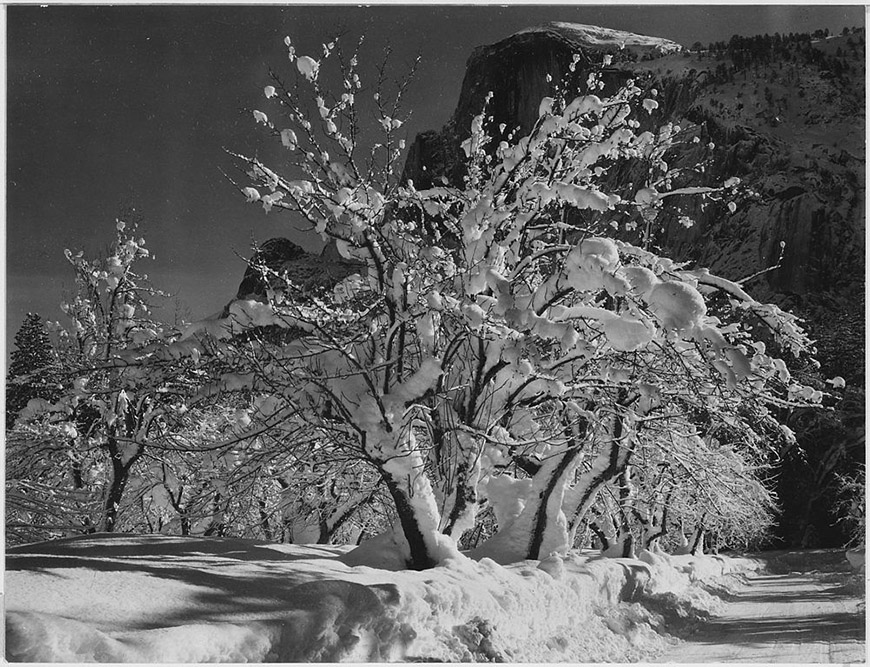
Trees with snow on branches, “Half Dome, Apple Orchard, Yosemite,” California. April 1933.;
From the series Ansel Adams Photographs of National Parks and Monuments, compiled 1941 – 1942, documenting the period ca. 1933 – 1942. Credit: Ansel Adams, Public domain, via Wikimedia Commons
Ansel Adams (1902–1984) was a renowned American photographer and environmentalist.
He is best known for his black-and-white landscape photographs, particularly of the American West, capturing the grandeur and beauty of nature.
Adams’ iconic image “Moon and Half Dome” is a testament to his mastery of light and composition.
He played a pivotal role in promoting photography as fine art and was a co-founder of the influential group f/64, which advocated for sharp focus and precise detail in images.
Adams’ dedication to the craft, technical expertise, and commitment to conservation has made him one of the most influential photographers of the 20th century.
Annie Leibovitz
Annie Leibovitz is an American portrait photographer born in 1949.
She gained recognition as the chief photographer for Rolling Stone magazine and later became a renowned celebrity photographer.
Leibovitz is known for her distinctive style and ability to capture the essence of her subjects.
Her iconic portraits include the intimate photograph of John Lennon and Yoko Ono taken hours before Lennon’s death, as well as the Vanity Fair cover featuring a pregnant Demi Moore.
Leibovitz’s work often blurs the line between art and commercial photography, and her portfolio encompasses a wide range of subjects, from celebrities to cultural figures and political leaders.
Richard Avedon
Richard Avedon (1923–2004) was an American fashion and portrait photographer.
He is celebrated for his innovative approach to fashion photography, rejecting traditional static poses and capturing his subjects in motion or expressing emotions.
Avedon’s striking portraits, characterized by their minimalistic style and white backgrounds, have graced the pages of numerous fashion magazines.
He photographed many influential personalities, including Marilyn Monroe, Audrey Hepburn, and Andy Warhol.
Avedon’s work goes beyond the realm of fashion, as he also produced poignant portraits of civil rights activists, politicians, and ordinary individuals, revealing the complexity of human identity.
How Much Do You REALLY Know About Photography?! 🤔
Test your photography knowledge with this quick quiz!
See how much you really know about photography...

Dorothea Lange
Dorothea Lange (1895–1965) was an influential American documentary photographer and photojournalist.
She is best known for her powerful images depicting the hardships and struggles of the Great Depression.
Lange’s most famous photograph, “Migrant Mother,” has become an iconic symbol of the era, capturing the desperation and resilience of migrant farmworkers during that time.
Her compassionate and empathetic approach to photography brought attention to social issues and gave a voice to the marginalized.
Lange’s work not only documented history but also had a lasting impact on the field of documentary photography.
Steve McCurry
View this post on Instagram
Steve McCurry is an American photojournalist born in 1950.
He gained international recognition for his captivating images that portray the human condition and cultural diversity.
McCurry’s most famous photograph, “Afghan Girl,” became an iconic symbol, capturing the piercing green eyes of a young Afghan refugee.
His work often focuses on conflict zones, highlighting the resilience of individuals in the face of adversity.
McCurry’s photographs have been featured in numerous publications and exhibitions, and his storytelling approach has touched the hearts of millions around the world.
Robert Frank
Robert Frank (1924–2019) was a Swiss-American photographer and filmmaker.
He is best known for his groundbreaking book “The Americans,” which documented his travels across the United States in the 1950s.
Frank’s photographs depicted the everyday lives of Americans, offering a critical and often unconventional view of American society at that time.
“The Americans” challenged the traditional notions of photography and influenced generations of photographers with its candid and subjective approach.
Frank’s work expanded the boundaries of documentary photography and continues to be highly regarded for its artistic and social significance.
Diane Arbus
Diane Arbus (1923–1971) was an influential American photographer known for her distinctive style and exploration of marginalized individuals and unconventional subjects.
Arbus had a unique ability to capture the vulnerability and rawness of her subjects, often challenging societal norms.
Her photographs provide an intimate glimpse into the lives of people considered outsiders, including dwarfs, giants, transvestites, and individuals with disabilities.
Arbus’ iconic images, such as “Identical Twins, Roselle, New Jersey,” have left a lasting impact on the field of photography and continue to provoke discussion and reflection on the human condition.
David LaChapelle
View this post on Instagram
David LaChapelle is an American commercial and fine art photographer known for his vibrant, surreal, and often provocative images.
LaChapelle’s work blurs the boundaries between art, fashion, and celebrity culture, creating visually stunning and thought-provoking photographs.
He has collaborated with numerous celebrities and produced iconic images that challenge conventional beauty standards and consumerism.
LaChapelle’s photographs are often rich in symbolism, humor, and social commentary, addressing contemporary issues and raising questions about our society’s values.
Cindy Sherman
Cindy Sherman is an American photographer and conceptual artist widely recognized for her self-portraits in which she transforms herself into various characters and explores themes of identity, gender, and representation.
Sherman’s photographs challenge traditional notions of beauty, stereotypes, and the construction of identity in the media-saturated world.
Her series “Untitled Film Stills,” in which she assumes the role of different female characters inspired by classic Hollywood and film noir, catapulted her to international acclaim.
Sherman’s work has had a profound impact on contemporary art and photography, challenging viewers to question the façade of images and the fluidity of identity.
Edward Weston
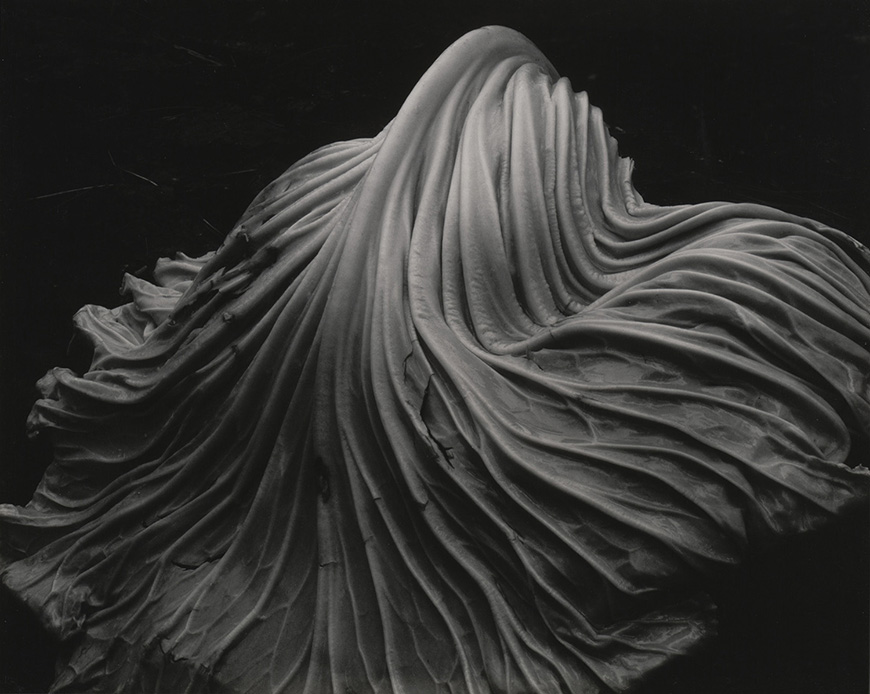
Edward Weston, Public domain, via Wikimedia Commons
Edward Weston (1886–1958) was a pioneering American photographer known for his contributions to modernist photography and his masterful use of light and form.
Weston’s iconic black-and-white images encompass a wide range of subjects, including landscapes, still lifes, and nudes.
His photographs reveal a keen attention to detail and a focus on the inherent beauty of everyday objects.
Weston’s pioneering approach to composition and his pursuit of purity and clarity in his images influenced generations of photographers and helped establish photography as a legitimate art form.
Irving Penn
Irving Penn (1917–2009) was an American photographer known for his contributions to fashion photography and portraiture.
Penn’s distinctive style combined elegance, simplicity, and attention to detail.
He captured the essence of his subjects, whether they were fashion models, celebrities, or ordinary people, with a sensitivity that revealed their inner beauty.
Penn’s work graced the pages of prestigious magazines like Vogue, and his iconic portraits, such as the series “Small Trades” and the photograph of Pablo Picasso, remain influential in the realm of photography.
Margaret Bourke-White
Margaret Bourke-White (1904–1971) was an American photographer and photojournalist known for her pioneering work in the field of documentary photography.
Bourke-White became the first female war correspondent and the first female photographer for Life magazine, capturing powerful images of historical events and figures.
Her photographs documented significant moments like the Great Depression, World War II, and the partition of India.
Bourke-White’s fearless approach, combined with her ability to convey the human experience and social issues through her images, made her one of the most influential photographers of her time.
Walker Evans
Walker Evans (1903–1975) was an American photographer best known for his work during the Great Depression era.
Evans’ photographs depicted the struggles and everyday life of ordinary Americans, particularly in rural areas.
His series with writer James Agee, “Let Us Now Praise Famous Men,” documented the lives of tenant farmers in the American South.
Evans’ straightforward and unadorned style, characterized by its honest portrayal of his subjects, had a profound impact on the development of documentary photography.
His images continue to provide a window into a defining period of American history.
Robert Mapplethorpe
Robert Mapplethorpe (1946–1989) was an American photographer known for his provocative and controversial black-and-white photographs.
His work explored themes of sexuality, gender, and the human body, often pushing the boundaries of what was considered acceptable in art.
Mapplethorpe’s diligent compositions and technical precision brought an element of classical beauty to his often explicit subject matter.
As a renowned black and white photographer, Mapplethorpe became a central figure in the 1980s art scene and sparked significant debates on freedom of expression and the role of art in society.
Mapplethorpe’s legacy continues to influence contemporary photographers and artists.
Man Ray
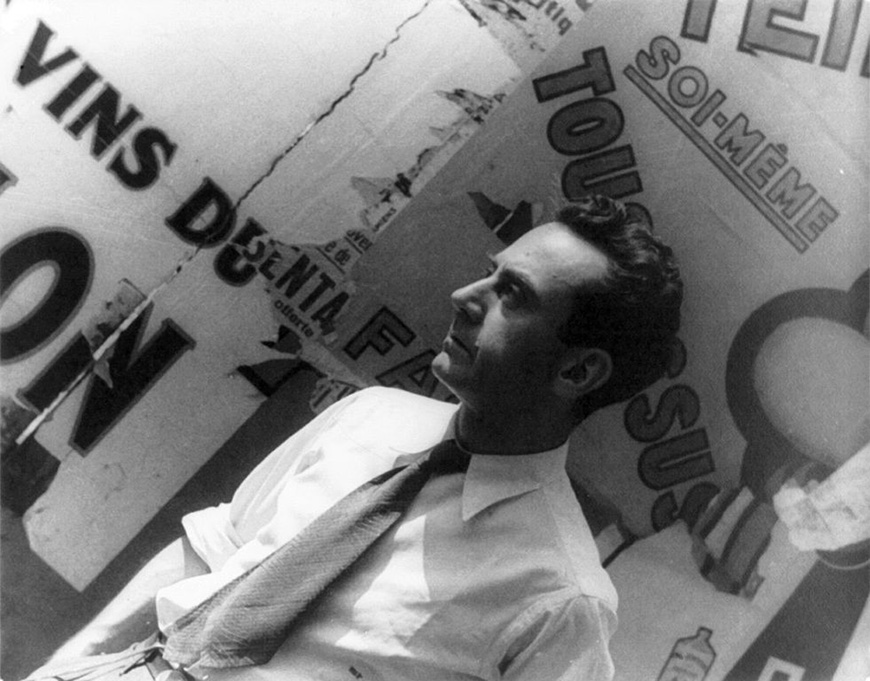
Man Ray in Paris. Credit: Carl Van Vechten, Public domain, via Wikimedia Commons
Man Ray (1890–1976) was an American artist and photographer who played a significant role in the Dada and Surrealist movements.
He was known for his experimental and avant-garde approach to photography, exploring new techniques and pushing the boundaries of the medium.
Man Ray’s photographs often had a dreamlike quality, combining elements of abstraction, double exposure, and photograms.
He was also renowned for his portraits of prominent artists and intellectuals of his time, capturing their unique personalities and artistic visions.
Man Ray’s innovative contributions to photography continue to inspire and influence artists today.
Sally Mann
Sally Mann is an American photographer known for her introspective and evocative images, particularly in the realm of portraiture and landscapes.
Mann’s photographs often explore themes of childhood, family, and the complexities of the human experience.
Her series “Immediate Family” gained widespread recognition and sparked controversy for its intimate and sometimes controversial portrayal of childhood.
Mann’s use of large-format cameras and traditional darkroom techniques adds a timeless quality to her work.
She has received numerous awards and her photographs are held in prestigious collections worldwide.
William Eggleston
William Eggleston is an American photographer known for his pioneering use of color photography in the art world.
His photographs capture seemingly ordinary and mundane subjects, transforming them into visually striking and poetic images.
Eggleston’s most famous series, “The Red Ceiling,” features a close-up photograph of a blood-red ceiling in a room.
This image challenged the conventional understanding of photography as a medium for capturing only the extraordinary or monumental.
Eggleston’s work has had a profound influence on color photography and continues to inspire generations of photographers.
Imogen Cunningham
Imogen Cunningham (1883–1976) was an American photographer known for her diverse body of work and mastery of different genres, including portraiture, botanical photography, and street photography.
Cunningham’s photographs often showcased a strong sense of composition and a keen eye for detail.
Her series “The Unmade Bed” and “Magnolia Blossom” are among her most famous works, capturing the intimate and the natural world with equal precision.
Cunningham’s career spanned over seven decades, and she made significant contributions to the development of photography as an art form.
Her innovative and experimental approach continues to inspire photographers today.
Weegee
Weegee, born as Arthur Fellig (1899–1968), was an Austrian-American photographer and photojournalist known for his gritty and candid images of New York City street life in the 1930s and 1940s.
Working as a freelance photographer, Weegee captured the raw and often sensational aspects of urban life, including crime scenes, accidents, and the nightclubs of the era.
His photographs provided a voyeuristic glimpse into the darker side of society and garnered him a reputation as a tabloid photographer.
Weegee’s distinctive style and his ability to capture decisive moments in the streets of New York have made him an influential figure in documentary photography.
Garry Winogrand
View this post on Instagram
Garry Winogrand (1928–1984) was an American street photographer known for his prolific output and his ability to capture the energy and chaos of urban life.
Winogrand’s photographs are characterized by their dynamic compositions and his keen observation of human behavior.
His series “Women Are Beautiful” and “The Animals” are among his most notable works, showcasing his unique perspective on society and the human condition.
Winogrand’s untiring exploration of the streets and his relentless pursuit of photographic moments established him as one of the most influential street photographers of his time.
His work continues to be celebrated for its honesty, wit, and portrayal of everyday life.
Alfred Stieglitz
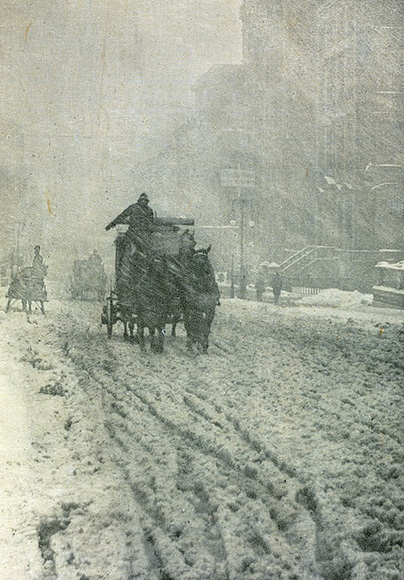
Camera Work: Winter, 5th Avenue. Credit: Alfred Stieglitz, Public domain, via Wikimedia Commons
Alfred Stieglitz (1864–1946) was an American photographer, art promoter, and modern art advocate.
He was instrumental in elevating photography to the status of fine art and played a pivotal role in the development of modern photography.
Stieglitz’s work encompassed a wide range of subjects, including landscapes, cityscapes, and portraits.
He was a champion of straight photography, emphasizing the use of photography as a means of personal expression and a vehicle for artistic vision.
Stieglitz’s dedication to photography as an art form and his efforts to establish photography galleries and publications paved the way for future generations of photographers.
Mary Ellen Mark
View this post on Instagram
Mary Ellen Mark (1940–2015) was an American photographer known for her compelling documentary photography.
Her work often focused on marginalized communities and individuals, capturing their stories with empathy and authenticity.
Mark’s photographs have been published in numerous magazines and exhibited worldwide.
One of her most famous projects is “Streetwise,” which documented the lives of homeless and troubled youth in Seattle.
This series became a landmark in documentary photography and was later turned into an award-winning film.
Mark’s powerful images continue to inspire and raise awareness about social issues.
Elliott Erwitt
Elliott Erwitt is an American photographer known for his humorous and often ironic images.
Born in 1928, Erwitt has had a long and prolific career, capturing a wide range of subjects, including everyday life, celebrities, and political figures.
His photographs often feature unexpected juxtapositions and clever observations.
Erwitt’s iconic photograph of a couple kissing in a car, titled “California, 1956,” has become one of his most recognized images.
With a distinct visual style and a keen sense of wit, Elliott Erwitt’s work has left a lasting impact on the world of photography.
Paul Strand
Paul Strand (1890–1976) was an American photographer and filmmaker who played a crucial role in the development of modern photography.
Strand’s early work was characterized by its sharp focus and bold compositions.
He was a prominent figure in the movement known as “straight photography,” which emphasized the objective and straightforward depiction of subjects.
Strand’s famous series, “The Family of Man,” exhibited at the Museum of Modern Art in 1955, showcased the universality of human experience through a collection of photographs from around the world.
His contribution to the medium, both artistically and technically, continues to inspire photographers to this day.
Vivian Maier
View this post on Instagram
Vivian Maier (1926–2009) was an American street photographer whose remarkable work was discovered posthumously.
Maier’s photographs, captured mostly in Chicago and New York City, depict candid and intimate moments of everyday life.
Despite working as a nanny for most of her life, Maier’s talent for photography remained unknown during her lifetime.
It was only after her death that a treasure trove of over 100,000 negatives was found, revealing her exceptional eye for composition and storytelling.
Vivian Maier’s street photography has since gained significant recognition, contributing to the understanding and appreciation of the genre.
W. Eugene Smith
W. Eugene Smith (1918–1978) was an American photojournalist renowned for his powerful and compassionate storytelling through photography.
Smith’s dedication to documenting the human condition often led him into dangerous and challenging situations.
His most notable project, “Minamata,” exposed the effects of mercury poisoning on the residents of a Japanese fishing village.
Smith’s photographs from this project raised awareness about the environmental and humanitarian crisis and had a profound impact on public opinion.
His commitment to social justice and his ability to capture the raw emotions of his subjects make him a revered figure in the field of documentary photography.
Stephen Shore
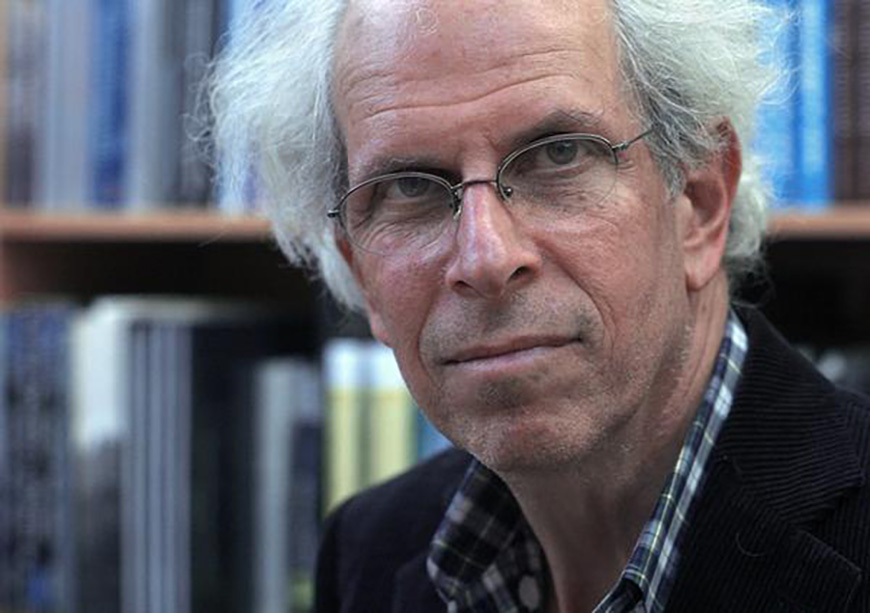
Stephen Shore. Credit: Drpaluga at en.wikipedia, CC BY-SA 3.0, via Wikimedia Commons
Stephen Shore is an American photographer known for his pioneering work in color photography.
Born in 1947, Shore began his photography career at an early age and gained recognition for his series of photographs taken during road trips across America.
His book “American Surfaces” and the series “Uncommon Places” solidified his reputation as a master of capturing the everyday and mundane.
Shore’s use of vibrant colors and his ability to find beauty in ordinary scenes have had a significant influence on contemporary photography.
Arnold Newman
Arnold Newman was an American portrait photographer known for his distinctive environmental portraits.
Born in 1918, Newman photographed numerous famous individuals, including artists, musicians, and politicians.
His portraits often showcased the subjects in their working environments, capturing their essence and personality.
Newman’s iconic photograph of the composer Igor Stravinsky, seated at a grand piano with his hands on the keys, is one of his most recognized works.
Throughout his career, Arnold Newman’s innovative approach to portraiture revolutionized the genre and left a lasting impact on the field of photography.
Mathew Brady
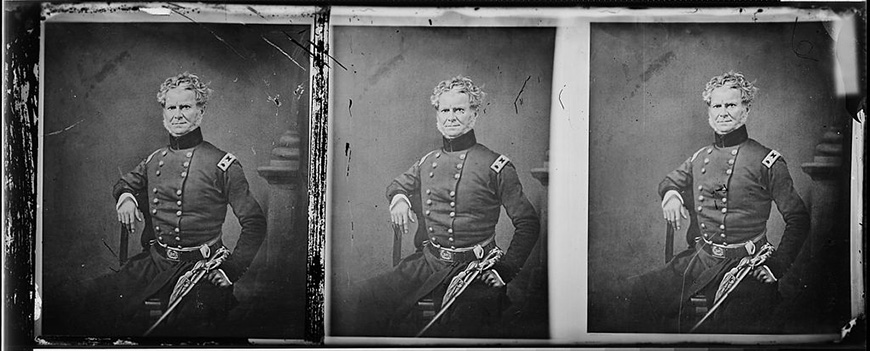
War Department. Office of the Chief Signal Officer. (08/01/1866 – 09/18/1947) Gen. David E. Twiggs. Credit: Mathew Benjamin Brady, Public domain, via Wikimedia Commons
Mathew Brady was an American photographer best known for his extensive documentation of the American Civil War.
Born in 1822, Brady was a prominent figure in early American photography and played a vital role in preserving the visual history of the war.
His photographs captured the grim realities of the battlefield, portraying the soldiers, their hardships, and the aftermath of war.
Brady’s images helped shape public perception and understanding of the Civil War, making him a significant contributor to the medium of documentary photography.
Philippe Halsman
Philippe Halsman was an American portrait photographer known for his collaboration with Salvador Dalí and his iconic “Jump” series.
Born in Latvia in 1906, Halsman worked primarily in the United States and gained recognition for his inventive and imaginative portraits.
His collaboration with Dalí resulted in surreal and thought-provoking photographs that challenged the conventions of portraiture.
Halsman’s “Jump” series captured famous individuals mid-air, showcasing their spontaneity and revealing a hidden aspect of their personalities.
His innovative approach to portraiture and his ability to capture the essence of his subjects in unconventional ways have solidified his legacy as a master photographer.
Yousuf Karsh
Yousuf Karsh was an Armenian-Canadian photographer known for his iconic portraits of world leaders, celebrities, and cultural figures.
Born in Armenia in 1908, Karsh immigrated to Canada and established himself as one of the most renowned portrait photographers of the 20th century.
His distinctive lighting techniques and attention to detail resulted in striking and intimate portraits.
Karsh’s famous photograph of Winston Churchill, capturing the statesman’s defiant expression, has become an enduring image of the 20th century.
Throughout his career, Yousuf Karsh photographed countless notable figures, leaving a profound mark on the genre of portrait photography.
Eliot Porter
Eliot Porter was an American photographer known for his pioneering work in color nature photography.
Born in 1901, Porter’s photographs showcased the beauty and fragility of the natural world.
His use of color and careful attention to detail brought a new dimension to nature photography.
Porter’s book “In Wildness Is the Preservation of the World” became a classic, featuring his stunning images of the American landscape.
Through his photography, Eliot Porter aimed to foster a greater appreciation for the environment and inspire conservation efforts.
Gregory Crewdson
Gregory Crewdson is an American photographer renowned for his meticulously staged and cinematic photographs.
Born in 1962, Crewdson’s work blurs the lines between photography and cinema.
His large-scale images often depict suburban landscapes with a sense of eerie mystery and tension.
Crewdson’s series “Beneath the Roses” became widely recognized for its haunting and surreal scenes, reminiscent of film stills.
His cinematic approach to photography has earned him critical acclaim and made him a leading figure in contemporary art.
Alec Soth
View this post on Instagram
Alec Soth is an American photographer known for his intimate and lyrical documentation of American life.
Born in 1969, Soth’s photographs often explore themes of solitude, longing, and the search for connection.
His book “Sleeping by the Mississippi” captured the essence of life along the Mississippi River, showcasing a diverse range of characters and landscapes.
Soth’s work reflects his curiosity about the human condition and his ability to capture the essence of his subjects with empathy and sensitivity.
With a poetic and introspective style, Alec Soth’s photographs invite viewers to contemplate the complexities of the human experience.
Lee Friedlander
Lee Friedlander is an American photographer known for his unique and often complex compositions.
Born in 1934, Friedlander’s photographs encompass a wide range of subjects, including street photography, landscapes, and portraiture.
His innovative use of reflections, shadows, and multiple layers creates visually intricate and thought-provoking images.
Friedlander’s series “The American Monument” captured the diversity of commemorative structures across the United States.
His influential body of work challenges traditional notions of photography and continues to inspire photographers exploring the medium’s creative possibilities.
Edward Steichen
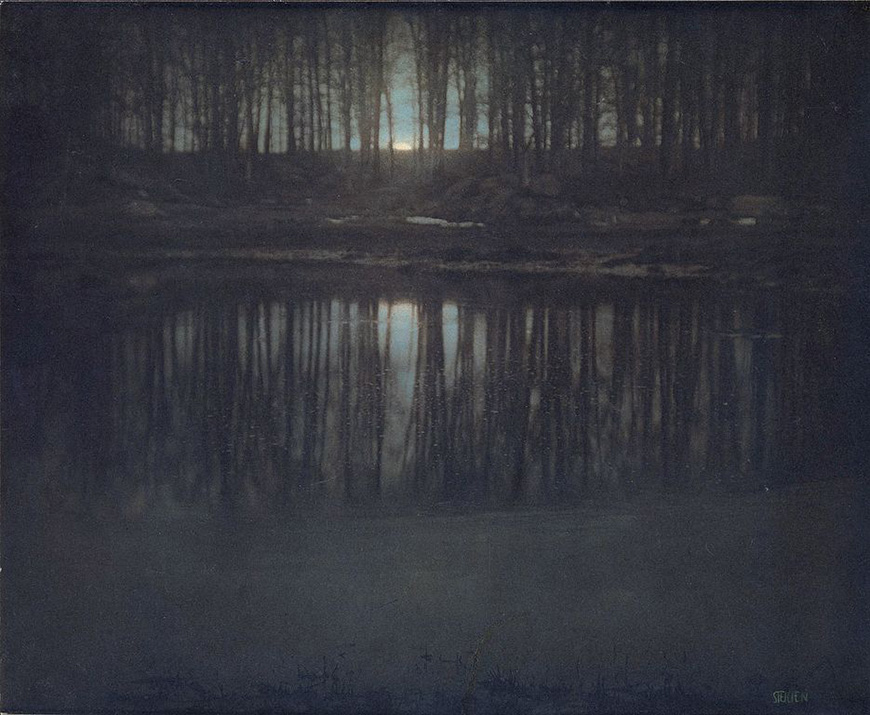
The Pond Moonlight. Credit: Edward Steichen, Public domain, via Wikimedia Commons
Edward Steichen was an American photographer known for his contributions to fashion photography and art photography.
Born in 1879, Steichen played a significant role in elevating photography as an art form during the early 20th century.
He was the first chief photographer for Condé Nast’s Vanity Fair and Vogue magazines.
Steichen’s portraits of celebrities and fashion models showcased his elegant and sophisticated style.
Later in his career, Steichen became the director of photography at the Museum of Modern Art, curating influential exhibitions and further promoting photography as an art form.
His innovative approach and artistic vision left a lasting impact on the development of photography as a respected medium.
Joel Meyerowitz
Joel Meyerowitz is an American photographer known for his street photography and his early adoption of color photography.
Born in 1938, Meyerowitz was one of the first photographers to embrace color as a medium for artistic expression.
His book “Cape Light” showcased his talent for capturing the unique qualities of light and color in the coastal town of Cape Cod.
Meyerowitz’s street photography work, particularly his images taken in New York City during the 1960s and 1970s, captured the energy and spirit of urban life.
His contributions to the field of color photography have been widely recognized, making him an influential figure in contemporary photography.
Gordon Parks
View this post on Instagram
Gordon Parks was an American photographer, filmmaker, and writer who documented African American life and social issues.
Born in 1912, Parks overcame poverty and racism to become one of the most prominent photographers of his time.
His photographs for Life magazine, particularly his series on the civil rights movement, brought attention to the struggles and resilience of African Americans.
Parks also directed films, including “Shaft,” becoming the first African American to direct a major Hollywood movie.
His impactful photography and commitment to social justice continue to inspire and educate audiences today.
Helen Levitt
Helen Levitt was an American photographer known for her street photography in New York City.
Born in 1913, Levitt began her career as a documentary filmmaker before turning to still photography.
Her candid photographs captured the everyday life and vibrant street scenes of New York City, particularly in neighborhoods like Harlem.
Levitt’s ability to capture fleeting moments and her keen eye for composition resulted in timeless images that celebrated the human spirit.
Her work has been widely exhibited and published, solidifying her place as a seminal figure in street photography.
Joe Rosenthal
Joe Rosenthal was an American photographer best known for his iconic photograph “Raising the Flag on Iwo Jima.”
Born in 1911, Rosenthal captured the photograph during World War II, depicting U.S. Marines raising the American flag on Mount Suribachi.
His image quickly became an enduring symbol of American heroism and patriotism.
Rosenthal’s photograph won the Pulitzer Prize and has been reproduced countless times, becoming one of the most recognizable images in history.
His work as a war photographer and his contribution to visual storytelling left a lasting impact on the field of photography.
Eve Arnold
Eve Arnold was an American photojournalist known for her insightful and intimate portraits of people from diverse cultures and walks of life.
Born in 1912, Arnold broke barriers as one of the first women to work for the Magnum Photos agency.
Her photographs captured the human experience with empathy and authenticity, whether photographing Marilyn Monroe or documenting the lives of marginalized communities.
Arnold’s iconic image of Marilyn Monroe on the set of “The Misfits” is considered one of her most famous photographs.
Throughout her career, Eve Arnold’s commitment to social justice and her ability to tell compelling stories through her images made her one of the most influential photographers of the 20th century.
Art Wolfe
Art Wolfe is an American photographer known for his stunning nature and wildlife photography.
Wolfe’s work showcases his deep appreciation for the natural world and his commitment to environmental conservation.
His photographs capture the beauty and diversity of landscapes, animals, and indigenous cultures from around the globe.
Wolfe’s series “The Art of Photographing Nature” and his book “Edge of the Earth, Corner of the Sky” are testaments to his artistic vision and technical expertise.
Through his images, Art Wolfe inspires viewers to connect with and protect the fragile ecosystems that make up our planet.
William Klein
William Klein was an American-born photographer and filmmaker known for his groundbreaking and avant-garde approach to photography.
Born in 1926, Klein started his career as a painter before transitioning to photography.
His bold and unconventional style challenged traditional photographic conventions, pushing the boundaries of the medium.
Klein’s book “Life is Good and Good for You in New York” captured the vibrant energy and chaos of the city, becoming a classic in street photography.
He also worked as a fashion photographer, introducing a fresh and raw aesthetic to the genre.
Throughout his career, William Klein’s innovative vision and rebellious spirit made him a significant figure in the art world, influencing generations of photographers.
What are some common styles adopted by American photographers?
American photographers have adopted various styles throughout history, reflecting the diverse influences and creative approaches within the country’s rich photographic tradition.
Some common styles adopted by American photographers include:
- Documentary Photography: Documentary photography focuses on capturing real-life events, people, and social issues. American photographers like Dorothea Lange, Lewis Hine, and Walker Evans documented the Great Depression and its impact on American society, while others like Mary Ellen Mark and Gordon Parks focused on social issues and marginalized communities.
- Street Photography: Street photography involves capturing candid moments and scenes of everyday life in public spaces. American street photographers like Robert Frank, Garry Winogrand, and Diane Arbus embraced this style, capturing the energy and diversity of American cities and streets.
- Landscape Photography: Landscape photography in America often emphasizes the vastness and natural beauty of the country’s landscapes. Photographers like Ansel Adams, Edward Weston, and William Henry Jackson are known for their stunning landscape images, showcasing the grandeur of national parks and wilderness areas.
- Portraiture: Portraiture has been a popular style among American photographers, capturing the essence of individuals and their unique stories. From the iconic portraits of Richard Avedon and Irving Penn to the introspective and intimate portraits of Sally Mann and Cindy Sherman, American photographers have explored diverse approaches to portraiture.
- Fashion Photography: American fashion photographers have played a significant role in shaping the fashion industry and visual culture. From the classic elegance of Richard Avedon and Irving Penn to the edgy and provocative style of Steven Meisel and Annie Leibovitz, American fashion photographers have brought creativity and innovation to the genre.
- Fine Art Photography: American photographers have embraced fine art photography as a means of personal expression and exploration. Artists like Alfred Stieglitz, Cindy Sherman, and Sally Mann have used photography as a medium for conceptual and artistic experimentation, challenging the boundaries of the medium and blurring the lines between photography and other art forms.
These styles are not exclusive to American photographers, but they represent significant contributions and movements within American photography.
It’s important to note that photographers often blend different styles and create their unique visual language, resulting in a diverse and dynamic photography scene in the United States.

Check out these 8 essential tools to help you succeed as a professional photographer.
Includes limited-time discounts.
As the Content Manager of Shotkit, India Mantle brings with her a lifelong love for photography that she developed during her childhood, watching her father document their family moments with his Nikon EM. In her free time, you find her enjoying the awe-inspiring natural beauty of her home, Northern Rivers, Australia.





